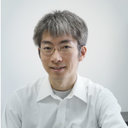Separation and isolation methods for analysis of the active principles of Sho-saiko-to (SST) oriental medicine.
キーワード
概要
Sho-saiko-to (SST) was introduced into Japan as an oriental classical medicine from China approximately 1500 years ago, and it is currently the most representative Kampo medicine (traditional Japanese medicine). SST is manufactured in Japan as an ethical drug on a modern industrial scale in which the quality of ingredients is standardized with Good Manufacturing Practices (GMP) regulation. SST is widely used for the treatment of chronic hepatitis. Experimental and clinical studies including multi-center, placebo-controlled, double-blind studies have demonstrated the various pharmacological effects of SST. SST is prepared from the hot water extraction of seven raw materials, therefore many kinds of constituents are included. Three-dimensional (3D) HPLC analysis is useful for obtaining many kinds of constituents, especially low molecular ultraviolet (UV) quenching compounds, contained in SST as well as its fractions. Fingerprint pattern provided by 3D HPLC analysis makes possible to identify the overall-viewing of SST. Databases of UV spectra of the components of medicinal herbs obtained by reversed-phase (RP) HPLC using a photodiode array (PDA) and fingerprint patterns of crude drugs made by 3D HPLC analysis facilitate the identification, analysis and quality of herbal drugs. Studies using both PDA HPLC and an amino acid analysis with a fluorometric detector have found that SST contains fifteen major low molecular compounds (i.e. baicalin, wogonin-7-O-glucuronide, liquiritin, their three aglycons, liquiritin apioside, glycyrrhizin, saikosaponin b1, saikosaponin b2, ginsenoside Rg1, ginsenoside Rb1, (6)-gingerol, (6)-shogaol and arginine). These compounds have various pharmacological actions, and are assumed to be responsible, at least partly, for the pharmacological effects of SST. Although there have only been a few investigations on high molecular compounds with pharmacological actions contained in SST, several kinds of polysaccharides have been isolated from constituent herbs of SST. This review paper summarizes analytical methods of separation, isolation and identification of compounds with biological activities from SST, which is a mixture drug of medicinal herbs. Accordingly, this paper would not focus on methods of separation, isolation and analysis of particular compounds from each constituent herb of SST.


